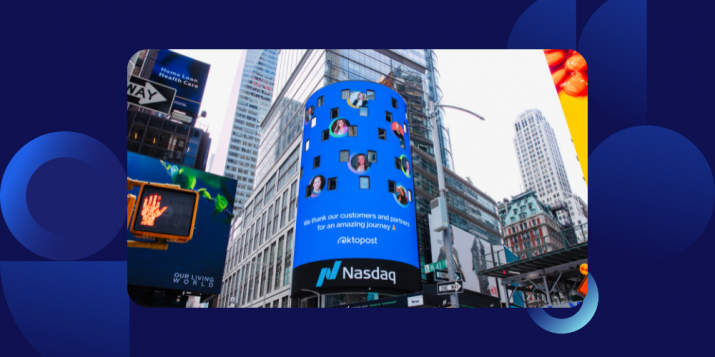
Forrester report: The alarming facts for B2B marketers on social media
B2B marketers are under a tightening microscope. As technology advances and data aggregation is becoming more pivotal for organizations, they experience higher pressure to effectively demonstrate how their activities are contributing to business outcomes.
The result is that B2B marketers must step up their game and put more emphasis on the things that matter most to their CEO and CFO, including revenue, profit, and customer growth.
In their 2016 report, Metrics That Matter for B2B Marketers, Forrester surveyed a number of leading CMOs and marketing executives, unearthing some interesting insights that should alarm B2B marketers who invest in social media marketing:
1. Outcomes NOT outputs
The underlying problem addressed by the Forrester survey is that in 2016, B2B marketing budget expectations have been on the rise, but a gigantic 45% of those we surveyed admit that they still struggle to attribute program spending to revenue results.
When it comes to social media marketing, B2B marketers are measuring what is convenient and easily trackable such as likes, clicks, comments, shares, followers. While these are “feel-good” metrics, they don’t help marketers analyze the true impact of social media on business results.
The only way to successfully align social marketing activities with business outcomes is by tracking lead conversion rates generated from social media. This may seem like a challenging task, and it is, but with a B2B social media management platform like Oktopost, it’s made a whole lot easier.
Oktopost allows B2B marketers to measure conversions from social media, and gives them a bird’s-eye view of their entire lead journeys, regardless of which social network or website they come across. As long as the person interacted with their social content at one point or another, everything is tracked, so marketers know exactly which post, profile, and network drove a lead to convert.
2. Connect social media to revenue, profit, and customer growth
No company wants to invest money and resources into a marketing channel that isn’t ROI positive. According to Forrester, B2B CMOs need to be able to quantify how their marketing channels are driving the organization’s broader business goals, so they can confidently answer the CEO’s important questions, such as:
- How much is marketing contributing to pipeline and revenue growth?
- What’s the ROI of marketing expenditures?
That being said, social media, which is equally as important as other marketing channels, should not be underestimated for its impact on business results and, therefore, must be proven for its return on investment. If you’re having trouble establishing your social media ROI, here’s a detailed step-by-step guide to assist you in the process.
Recommended for further reading
3. Manage marketing performance across the customer life cycle
The internet has revolutionized the way buyers make decisions regarding purchasing a product. In fact, the average buyer engages with more than 10 pieces of content about a company before making a purchase decision.
This places B2B marketers at the forefront of the buying cycle, meaning that at any point when a customer interacts with their company, Forrester suggests aligning customer engagement processes with every stage of the buyer’s purchase journey.
Despite the oft-discussed war on who owns the funnel, marketing, and sales must collaborate and agree on a shared life-cycle strategy by:
- Defining the stage names
- Specifying the qualifications and conditions for placing someone in that stage
- Setting rules for movement from one stage to the next.
With this in place, marketers can create optimized content relevant to their potential customers’ needs and interests at every touch-point with the company. More importantly, they can produce content that positions the value of their product and solution to the right buyer across their cycle and distribute it throughout social media.
4. Connect data across programs and platforms
To make the matters more complicated, B2B marketers are not combining their data across channels, tools, and platforms. Consequently, their social lead data remains siloed, which means they are not able to leverage it across the various departments of their organization, including sales and customer success.
Through Oktopost, marketers can collect the data from social media and share it with their marketing automation and CRM platforms, for smarter lead scoring and nurturing programs, as well as enhanced retargeting. They can create a single view (as Forrester recommends) of their leads’ and customers’ cross-channel interactions. This is essential for gaining deeper insights into customer behavior and developing stronger relationships with prospects or clients.
What’s next?
B2B marketers are stepping up as the leading personnel to guide buyers down the funnel. In the space of advancing technology and analytical tools, B2B marketers need to do more than measure likes, shares, comments, and all those vanity metrics on social media. Instead, they need to focus on valuable metrics like conversion!
With a proper social media management platform that caters to B2B needs and analytics, they can track and prove how their efforts are translating into revenue, profit, and customer growth. Having these results at their fingertips gives them an opportunity to impress management and confidently show how social media is driving better business results.


